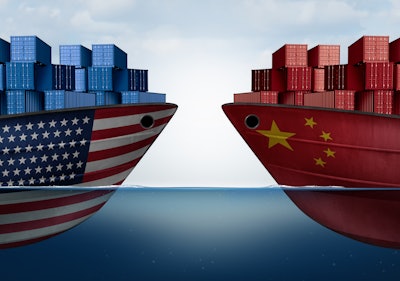
President Trump’s order for a 25 percent tariff on foreign steel imports and a 10 percent tariff on aluminum imports into the United States poses significant risks to corporations across the world.
A major concern for companies is that the aluminum and steel tariffs may be the first in a list of actions targeting what the Trump Administration terms “unfair trading practices.”
European officials have already announced they would impose tariffs on U.S.-made goods imported to the European Union (EU) if the Trump Administration imposed tariffs on goods made in the EU. Cecilia Malmstrom, the EU Commissioner for trade, said that if U.S. tariffs were imposed, the EU could increase protections for the EU against steel diverted from the United States, in addition to imposing tariffs on a series of imported goods made in the United States. The list of goods that could be targeted includes steel, clothing, bed linen, chewing tobacco and orange juice, among others.
Another key focus is on the retaliation from China. The United Sates is 26th on the list of countries to which China exports steel. The Chinese media has identified potential retaliatory measures the Chinese government could take in response to U.S. tariffs, on goods like agricultural products, aircraft, technology and even U.S. treasury bonds.
There are still many questions about if, when and how these tariffs and counter-tariffs will playout, but waiting until they hit will be too late to effectively mitigate the damage. Advanced scenario planning is essential. This is called enterprise risk management.
Proactive risk assessments as part of an integrated enterprise risk management program will help navigate any business through uncertain events like global trade wars. With enterprise risk management, areas of potential concern are identified ahead of time, allowing companies to put contingency plans in place to mitigate the risk fallout from a trade war.
Protecting Your Business
Companies can take certain steps to protect themselves from the uncertain or detrimental effects of a trade war. Risk assessments as part of an integrated enterprise risk management program will identify potentially harmful upstream and downstream impacts from a trade war in advance, and will accurately identify where these impacts will cause the most harm within an organization.
Risk assessments then allow companies to objectively prioritize areas of concern in order of the business units or operations that are most valuable and critical for achieving business goals. They also allow management to prioritize and operationalize supply chain changes as needed.
To adopt an effective risk assessment program at your organization, experts recommend focusing on the following five best practices:
- Adopt a root-cause approach: Use risk assessments pushed out to the front lines of your business. They are your subject matter experts, and they know the details of the sources or root cause of potential impacts, which are different for each department, and need a mechanism and process to score the impact and likelihood and outline the connection so that others can plan. The causes are in several departments and can have effects in multiple business areas and even across supply chains. Identifying the sources and connecting the dots for likely collateral damage is critical.
- Standardize your assessment scale: Use a scale from 1-10, with 10 having the most unfavorable consequences to the organization, split into five buckets to provide a high and low of each bucket (1-2, 3-4, 5-6, etc.). Using a 10 scale makes the math easy, and having only five buckets provides flexibility to those performing assessments.
- Define objective evaluation criteria: Often, one person’s nine is another person’s seven. You need to provide clear definition on what each of the five buckets are in unambiguous terms. You can choose multiple ways of expressing severity, both qualitative and quantitative, such as financial, legal, strategic, yet only one of the criteria listed for a specific level has to be met in order to rate a factor at that level. This gives qualitative criterion a way to become quantitative and comparable across the enterprise.
- Link risks to controls: Once you’ve identified the sources of risks and assessed them objectively, you need to know how your existing controls are actually covering these risks. First, link risks to corporate goals found in the strategic plans for your organization. Then, work with business areas to identify the goals each group impacts and which of the risks you identified are applicable to their operations.
- Report and monitor effectiveness over time: By objectively assessing risk across your organization and connecting information to strategic goals, you can present information the board recognizes and understands. Report on your organization's most critical risks and how assurance of risk coverage changes as you implement root-cause controls.
Impacts of a Trade War
The imposition of steel and aluminum tariffs by the Trump Administration will have direct and indirect impacts on U.S. companies. An example of a direct impact is the raw material import costs for U.S.-based producers of machinery and cars may rise, while comparable goods manufactured outside of the United States may become cheaper for American consumers. Consequently, manufacturing companies in the United States may see higher costs of goods sold and reductions in overseas (foreign) sales.
An indirect impact would be that changes in production and prices will require modifications to sourcing and procurement methods. These sudden shifts may have an impact on product quality and availability, since some companies may experience supply chain problems when rapidly moving to reduce production in some areas while ramping up production in others. Performing operational risk assessments will effectively identify areas where change can have a positive or a negative impact on business operations.
Risk assessments are essential for good performance. Companies must use risk assessments proactively through multiple layers of management, down to the front-line supervisor and across business groups and suppliers. Doing so will identify areas of possible concern before they’re a problem, facilitating effective contingency planning. Risk assessments make connections between seemingly unrelated processes and activities that will cause problems when the business environment changes.
When performed regularly across locations, assessments connect processes, products, suppliers and customers to help companies stay several steps ahead by identifying the weakest links to monitor and capturing, analyzing and reporting early stages of incidents before they get out of control. Ultimately getting the proper resources allocated to preemptively fix problems will identify opportunities due to change that competitors will miss because they are too busy reacting.
Steven Minsky is CEO of LogicManager and author of the RIMS Risk Maturity Model.





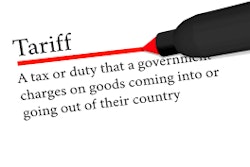

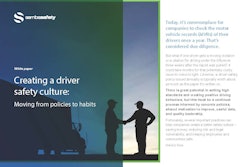
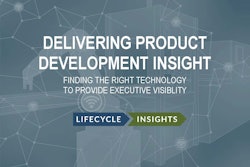




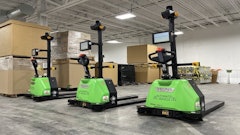





![Pros To Know 2026 [color]](https://img.sdcexec.com/mindful/acbm/workspaces/default/uploads/2025/08/prostoknow-2026-color.mduFvhpgMk.png?ar=16%3A9&auto=format%2Ccompress&bg=fff&fill-color=fff&fit=fill&h=135&q=70&w=240)
